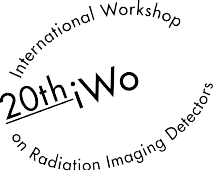Speaker
Description
Detectors which are a valid choice for imaging applications are not necessarily a good choice for diffraction applications. The Chemistry Nobel Prize 2017 went to high-resolution imaging of biomolecules in solution by cryo Electron Microscopy (cryo-EM). Three major technology breakthroughs were celebrated: 1) Computation methods for data analysis; 2) Sample preparation and 3) understanding the limitations of the techniques and the importance of excellent near-ideal detectors.
Current state-of-the-art detectors can, while very powerful for imaging applications, not be used for diffraction experiments. For imaging application, current detectors reach their best and DQE and MTF responses only at the higher electron energies of 300 keV [1]. In the past Medipix, EIGER and Timepix detectors have been used successfully for imaging applications (< 120 keV) and diffraction (< 200 keV) experiments, but not at higher energies as their MTF and DQE collapses at higher energies. With the Timepix 3 event-based Time-over-Threshold and Time-of-Arrival information can be obtained [2], which opens up new possibilities where every single electron track can be analyzed. This allows determining the point of impact of every electron a wide range of energies.
Here, we present an initial characterization of the Timepix3 for electron microscopy. Two detector quad assemblies are packaged in vacuum camera housings and mounted on a 200kEV FEI Tecnai Arctica as well as a 300keV FEI Tecnai Polara electron microscopes. The simulation package GEANT4Medipix, developed and validated by Krapohl et al. [3] for X-rays, is able to simulate interactions of the incident electron track in the sensor layer, drifting of hole pairs, and electronics responsible for digitizing the signal of the induced charge separation. The package was used to generate thousands of electron tracks and their simulated pixel responses. The output from this simulation was used to train a convolutional neural network to predict the incident position of the corresponding electron within a pixel cluster. Using a secondary set, the neural network was able to locate the known point of impact with an accuracy better than half a pixel. To compensate for non-uniform response of the chip, an algorithm was developed which uses the deposited energy spectrum of many tracks. This method is invariant to changes in the feedback of the pixel over time and removes the need to calibrate each pixel by the use of radiation sources outside of the microscope. We ascertained that the neural network out-performed other computational methods for improving the DQE and MTF of the Timepix3.
[1] G. McMullan, et al. Ultramicroscopy 147 (2014): 156-163
[2] T. Poikela, et al. Journal of instrumentation 9.05 (2014): C05013
[3] D. Krapohl, et al. IEEE Transactions on Nuclear Science 63.3 (2016): 1874-1881
